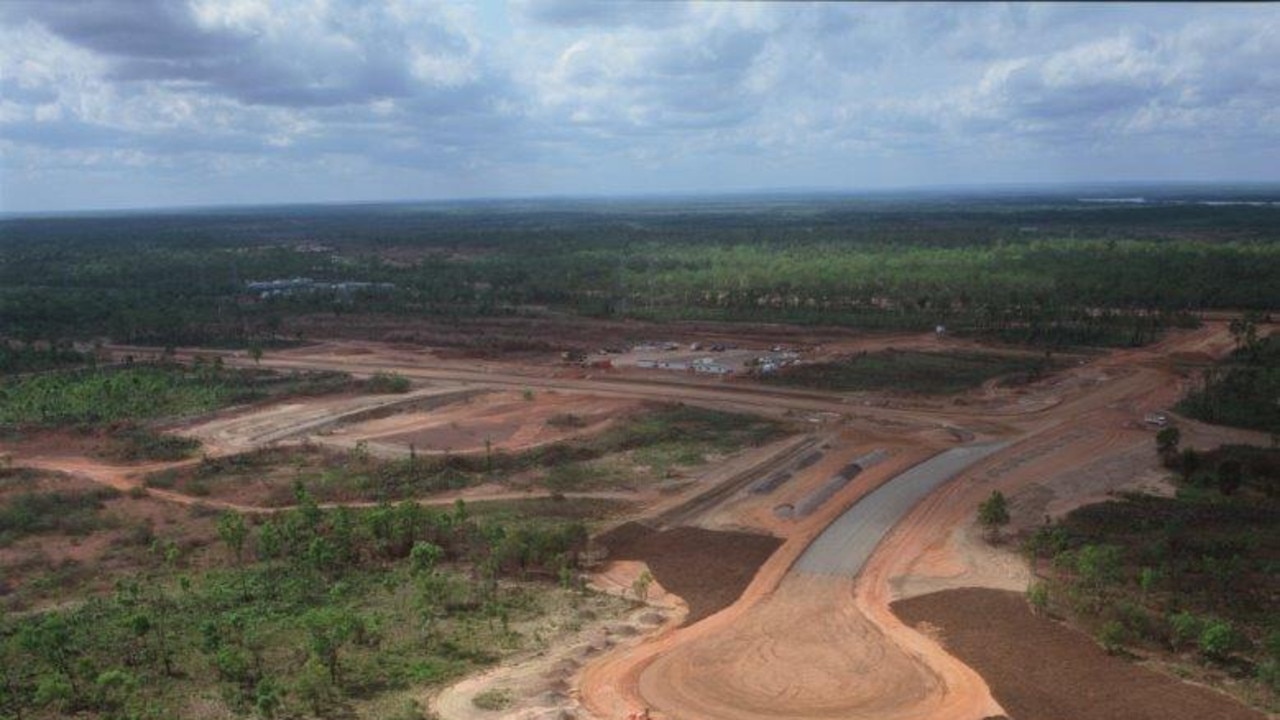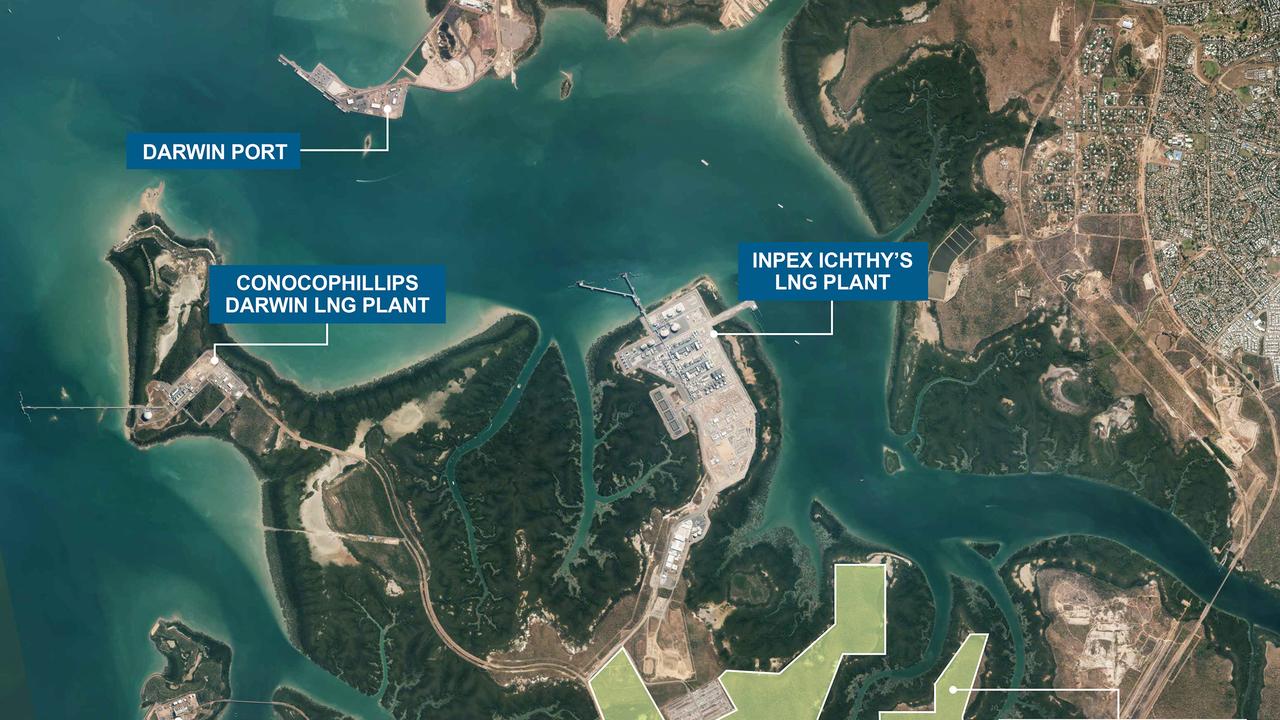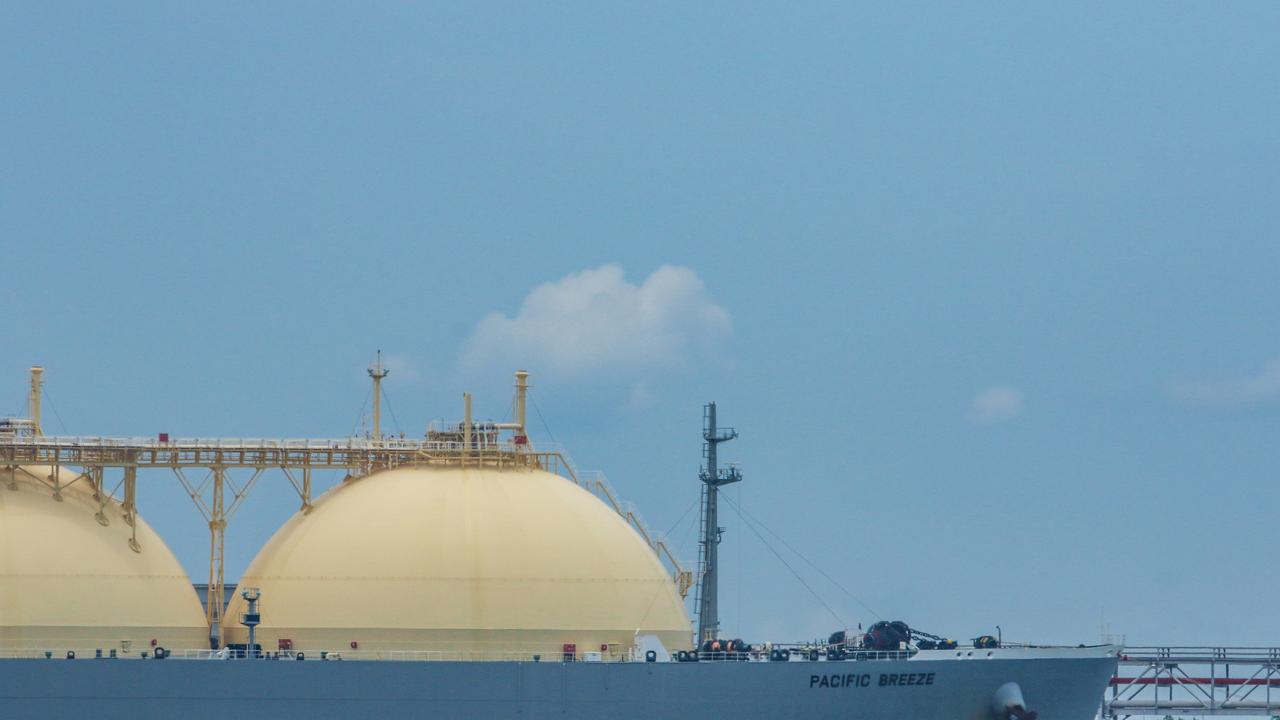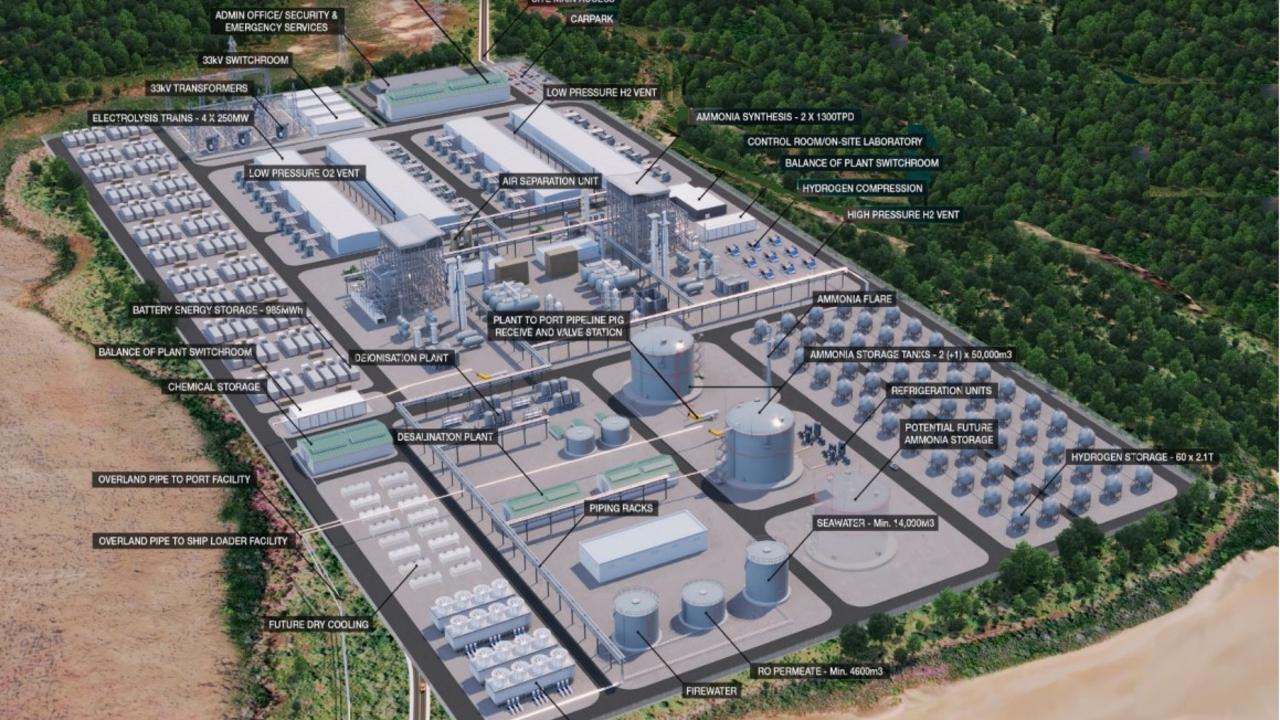The Middle Arm Sustainable Development Precinct has potential to power the NT economy and provide energy advantages for Australian and international markets into the foreseeable future.
Should the NT and Commonwealth government’s initial vision for the project be realised, it could deliver tens of billions in investment dollars and economic activity to the Territory coupled with tens of thousands of jobs.
The precinct is being promoted as a blueprint for future Australian industrial hubs offering energy providers a sustainable, modern and hi-tech alternative.
It will be largely powered by renewables and the industries based there will reflect the Territory government’s target to reach a net zero economy by 2050

Middle Arm by air October 2022. Picture by Wayne Zerbe
Middle Arm will foster critical minerals processing which is the future of energy transition through products such as batteries, as well as advanced manufacturing.
It’s hoped solar and future fuels such as blue and green hydrogen would ultimately power the businesses based there.
As well, a carbon capture and storage facility will trap at least 90 per cent of emissions at the source and provide options for international and Australian producers to store carbon.
The precinct will be master-planned so infrastructure, services, engineering and environmental approvals create certainty for industry through a clear process.
The NT government announced in June the names of the five initial proponents who want to be based at Middle Arm.

The Land Development Corporation has announced BMD Urban Pty Ltd, as the successful tenderer to complete construction works for Stage 1 of Kittyhawk Estate.
That planning has also included extensive environmental and marine studies to minimise any impact and safeguard the environment including Darwin Harbour.
They are French renewable operator Total Eren, Fortescue Future Industries, critical minerals start-up Tivan, natural gas operator Tamboran Resources Ltd and critical minerals company Avenira.
The Middle Arm Sustainable Development Precinct is a 1500ha package of land with parcels belonging to the NT government and the Land Development Corporation.
About 500ha of land has been given over to the first tranche of five projects with about 300ha of that at the Kittyhawk Estate at Middle Arm owned by the Land Development Corporation. About 30ha at Stage One is serviced and ready for development.

INPEX is currently the biggest tenant at Darwins Middle Arm. Picture: Glenn Campbell
Avenira and Fortescue are proposing projects at Kittyhawk while the remaining 200ha is located on Crown Land, managed under the Crown Lands Act.
The so-called first five at Middle Arm have been given ‘not to deal’ rights by the NT government for up to 12 months to determine whether to proceed with their particular project.
The precinct is expected to be largely powered by renewable and solar sources, has supplies of water needed to produce green hydrogen, nearby onshore and offshore gas sources and access to critical minerals and rare earths for renewables.
One of the first five companies, Tivan, announced on Thursday it had secured a six-month extension with the NT government to develop a Tivan processing facility, giving it an 12-month ‘not to deal’ provision.

Concept for the Middle Arm hydrogen hub by Total Eren.
The NT government has been working for five years on key aspect including common-user infrastructure such as modular offload facilities, jetties, storage and a pipeline network and will continue significant planning and consultation to ensure the precinct’s success
More than 200 studies have already been undertaken around design and project advancement and its proximity to Darwin Port and Darwin International Airport is an enormous selling point.
Middle Arm is near some of the world’s fastest growing economies and is expected to leverage off its proximity to South-East Asia and the Indo-Pacific.
The government points out that 45 per cent of global population lives directly to the Territory’s north, and that same region produces the same percentage of greenhouse gas emissions.
The Commonwealth government has contributed $1.5bn equity into the project.
Source: NT NEWS

